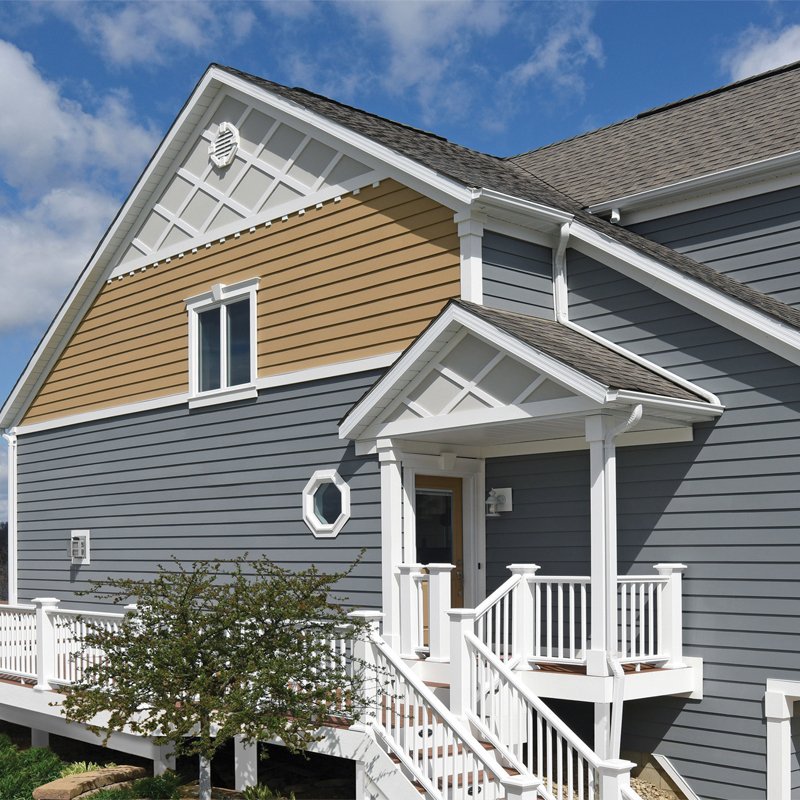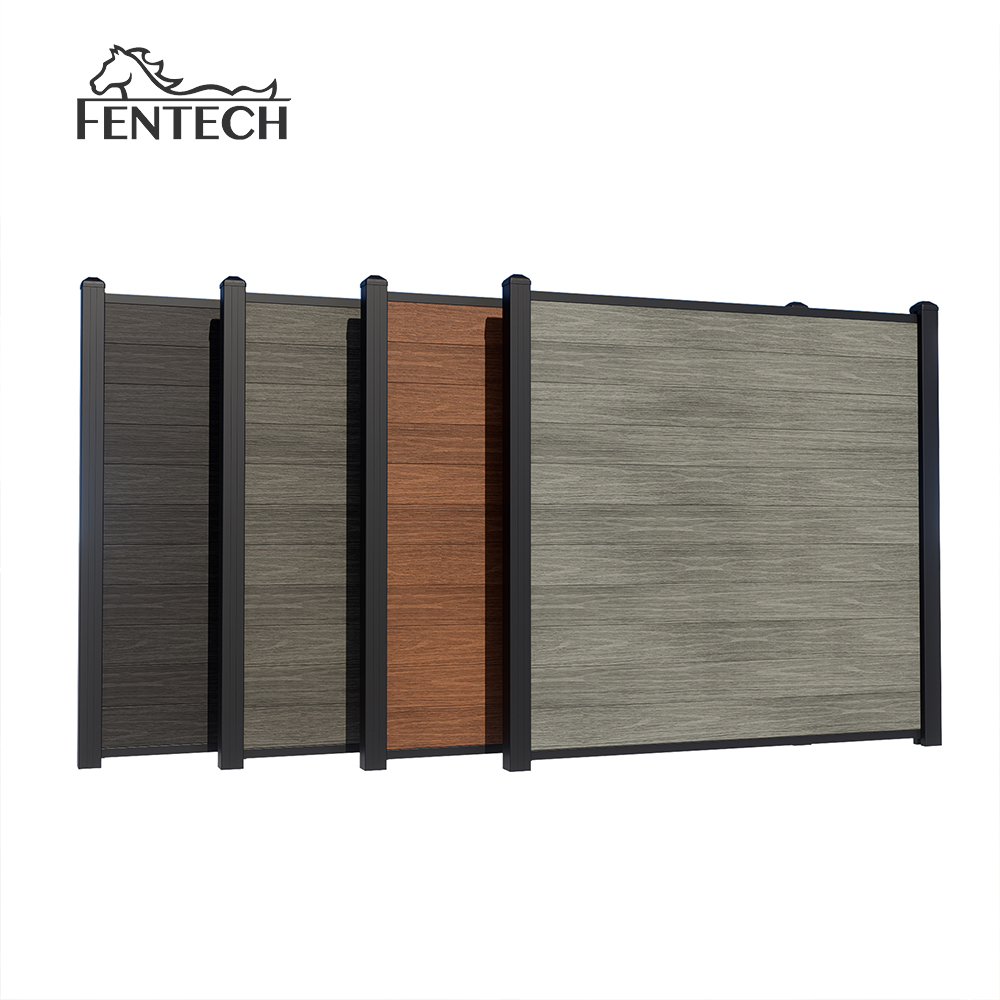We are professional China Custom Vinyl Fence Manufacturers with fences virgin PVC/Vinyl material and UV Protected.
When it comes to protecting your home from the elements and enhancing its curb appeal, the choice of siding is one of the most critical decisions you’ll make. Among the various options available, PVC siding panel have emerged as a standout choice for homeowners seeking a durable, low-maintenance, and aesthetically pleasing solution. But what exactly are they, and are they the right fit for your home? This comprehensive guide will walk you through everything you need to know.
What Are PVC Siding Panels?
Let’s start with the basics. PVC, or polyvinyl chloride, is a type of plastic known for its strength, durability, and versatility. PVC siding panels are engineered exterior cladding products made primarily from this material. They are designed to mimic the look of traditional wood siding, particularly board and batten or shiplap styles, but without the inherent drawbacks of organic materials.
Unlike wood, PVC exterior cladding is impervious to moisture, insects, and rot. It’s a solid, homogeneous material, meaning its color and strength are consistent throughout its entire thickness, not just on a thin surface layer. This construction is key to its long-term performance and minimal upkeep requirements.
Key Benefits of Choosing PVC Siding
Homeowners are increasingly turning to PVC wall cladding for exteriors due to its compelling list of advantages. Here’s a breakdown of the top benefits:
Unmatched Durability and Longevity: This is perhaps the biggest selling point. PVC siding is incredibly tough. It won’t corrode, rot, or provide a food source for pests like termites or carpenter ants. It’s also highly impact-resistant, meaning it can withstand hail, flying debris, and accidental bumps without denting or cracking like vinyl or aluminum might.
Extremely Low Maintenance: Forget annual scraping, sanding, and painting. Maintenance-free siding like PVC requires very little upkeep. A simple wash with a garden hose or a light soapy solution and a soft brush once or twice a year is all it takes to keep it looking new. It never needs to be repainted, as the color is baked throughout the entire panel.
Excellent Moisture Resistance: For homes in humid climates or areas with heavy rainfall, waterproof siding is a game-changer. PVC panels will not warp, swell, or delaminate when exposed to water. This makes them an excellent choice for protecting your home’s structural integrity and preventing mold and mildew growth behind the siding.
Aesthetic Versatility: Modern manufacturing techniques allow PVC siding to closely replicate the texture and depth of real wood grain. It is available in a wide array of colors and profiles, from smooth finishes to wood-grain textures, allowing you to achieve a custom, high-end look for your home’s exterior.
Energy Efficiency: Many PVC siding panels are designed with insulating properties. Some systems are even available with integrated foam backing, which adds an extra layer of thermal insulation to your home. This can help reduce heat transfer, lower your energy bills, and improve overall comfort.
Environmentally Friendly Options: While it is a plastic, PVC siding is often recyclable. Furthermore, its incredibly long lifespan—often 50 years or more with proper installation—means it won’t end up in a landfill nearly as often as other materials that require replacement every 15-20 years.

Potential Considerations
While the benefits are significant, it’s important to have a balanced view. There are a few factors to consider:
Initial Cost: The cost of PVC siding is typically higher than standard vinyl siding upfront. However, many homeowners view this as a long-term investment, as the savings on maintenance, repairs, and repainting over decades can more than offset the initial price difference.
Installation: Proper installation is crucial for any siding to perform correctly. While some experienced DIYers may attempt it, it is highly recommended to hire a professional installer familiar with the specific requirements of PVC siding installation. Ensuring correct fitting and fastening is key to avoiding issues down the line.
Color Limitations: Unlike paint on wood, you cannot change the color of your PVC siding. The color you choose is the color you will have for the life of the product. It’s essential to select a timeless color you will be happy with for years to come.
PVC Siding vs. Other Popular Materials
How does it stack up against the competition?
PVC vs. Vinyl Siding: Standard vinyl siding is a hollow, flexible product that can be prone to cracking in cold weather and warping in intense heat. PVC siding panels are generally thicker, more rigid, and more impact-resistant. Think of vinyl as a hollow-core door and PVC as a solid-core door.
PVC vs. Wood Siding: Wood offers a classic, beautiful look but requires constant maintenance—painting, staining, and repairs for rot and insects. PVC siding offers a similar aesthetic with virtually none of the upkeep.
PVC vs. Fiber Cement Siding: Fiber cement is also very durable and low-maintenance. However, it is significantly heavier, more difficult to install, and can be more expensive when factoring in installation labor and the need for painting (unless pre-finished).
Understanding Costs and Installation
The cost to install PVC siding can vary widely based on your home’s size, location, the complexity of the job, and the specific product chosen. On average, you can expect it to be a premium product with a price point reflecting its quality and longevity.
The installation process for PVC exterior cladding is similar to other sidings but with specific nuances:
Preparation: The existing old siding is removed, and the wall sheathing is inspected for any damage or rot, which must be repaired.
Weather Barrier: A waterproof house wrap is installed over the sheathing to provide a secondary drainage plane and protect the structure.
Flashing: Critical areas like windows, doors, and corners are meticulously flashed with metal or compatible tape to direct water away.
Installation: Panels are typically installed starting from the bottom and working up. They are nailed or screwed into place following the manufacturer’s precise instructions regarding nailing patterns and expansion/contraction gaps. Using the correct fasteners and not over-driving them is essential.
Trim and Finishing: Finally, corners, trim pieces, and J-channels around windows are installed to give the project a clean, finished appearance.
Is PVC Siding the Right Choice for Your Home?
PVC siding panels are an excellent investment for homeowners who:
Value long-term durability and want a “install it and forget it” solution.
Live in harsh climates with high moisture, intense sun, or potential for impact from weather.
Want the beautiful look of wood without the relentless maintenance.
Are planning to stay in their home for many years and want to maximize its value and protection.
Ultimately, selecting siding is a significant decision. PVC siding offers a powerful combination of resilience, beauty, and ease of care that is hard to beat. By weighing its benefits against your budget, style preferences, and local climate, you can determine if this modern, high-performance cladding is the perfect shield for your home.
 English
English  中文简体
中文简体
























